52 found, showing page 2 of 4
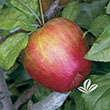
This cold-hardy apple variety produces juicy, crisp apples that ripen in early September. It grows 8 to 10' tall and has pinkish white flowers that appear in April. Best when paired with other early to mid-season blooming apple varieties.
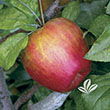
This cold-hardy apple variety produces juicy, crisp apples that ripen in early September. It grows 8 to 10' tall and has pinkish white flowers that appear in April. Best when paired with other early to mid-season blooming apple varieties.
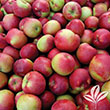
This cold-hardy variety produces crisp, sweet, mildly tart fruit that ripens in mid-September. The 'McIntosh' is a manageable sized tree with large, reachable fruits within the first 6-10' of growth. They average out at 15-20' tall and 8-10' wide and create quite an abundant crop when paired with a pollinator, such as the 'Jonathan' and 'Liberty' varieties.
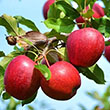
The 'Red Winesap' produces an apple that is both sweet and tangy. The apples are firm and crisp, and they ripen in mid-October. Will average out at 12-15' tall and wide.
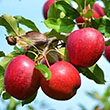
The 'Red Winesap' produces an apple that is both sweet and tangy. The apples are firm and crisp, and they ripen in mid-October. Will average out at 12-15' tall and wide.

The 'Blenheim' variety is famous in California for its production of sweet, aromatic fruit that is great for canning and drying. Produces fruit that will ripen in mid-late July depending on the climate. Will average at 10-15' tall and wide, but pruning is suggested to maintain its smaller size. Great pollinator for other apricot varieties.
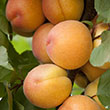
The 'Flavor Delight' aprium is 75% apricot and 25% plum, producing a fruit that is just the right mix of sweet and tangy. These apriums are great for jams, cobblers and fresh eating. Fruits will ripen in mid-July and produce most abundant crop when cross-pollinated. Dwarf variety will average 10-15' tall and wide and can be maintained with pruning.

Merlot Redbud | The 'Merlot' is a semi-dwarf variety that will reach 10-12' tall and 12-15' wide. It is prized for its large, heart-shaped foliage that emerges burgundy-red and ages to dark-green as the seasons change. Dark, purple-pink flowers appear in mid-spring before foliage emerges.
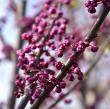
Pink Pom Poms Redbud | The 'Pink Pom Poms' is prized for its large, dark-pink flowers that emerge in early spring before its rich-green, heart-shaped foliage appears. It has an open, upright growth habit and will reach 15-20' tall and 12-15' wide at maturity.
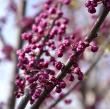
The 'Pink Pom Poms' is prized for its large, dark-pink flowers that emerge in early spring before its rich-green, heart-shaped foliage appears. It has an open, upright growth habit and will reach 15-20' tall and 12-15' wide at maturity.
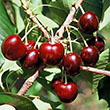
The 'Blackgold' is a semi-dwarf variety that produces delicious, crack-resistant, sweet cherries that are perfect for eating right off the tree. This variety is a great pollinator for other sweet cherry trees and produces consistently large crops of fruit. It will grow 12-15' tall and wide and fruit will ripen in mid-June.
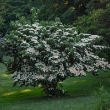
The 'Milky Way' is prized for its abundant clusters of creamy-white flowers that appear in late spring. This is a mid-sized variety that will reach 15-20' tall and wide at maturity. Fall foliage is attractive, purplish-red.
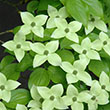
--

Plants are vigorous, producing long shoots from soil level one growing season and bearing fruit the next. These are removed after bearing and replaced by the current year's growth. This makes the plant easy to prune and manage as a bush. Large fruit clusters with good flavor ripen in August each year. Berries have very high anthocyanin content--very good for you! This is the more productive variety, but both varieties are required for cross pollination in a ratio of 1 Samyl : 5 Samdal.
52 found, showing page 2 of 4